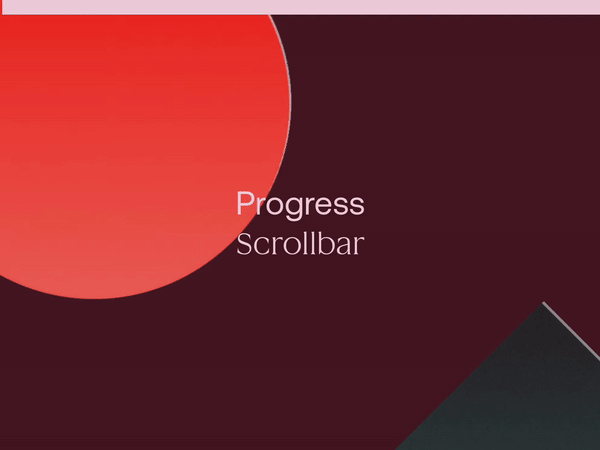Interactive Content 101: Design tips, ideas, and tools
March 28, 2023
Words by Selene Nelson
Interactive content is one of the most effective ways to gain an advantage over competitors, and help you stand out online.
If you want to serve your visitors engaging, enjoyable, and memorable brand experiences, you need to create interactive content. Interactivity is one of the best ways to elevate your content and give your site that wow factor – and luckily, creating it is much easier than you might think. Using no-code tools you can easily create immersive landing pages, microsites, and articles that live within your existing website — all without having to ditch your CMS or write a line of code. We’ve rounded up our best tips and a whole host of interactive content ideas to help your brand stand out.
What is Interactive Content?
For years, things like PDF guides, infographics, and eBooks were viewed as the holy grail of content – but today, things are very different. Consumers have become increasingly discerning when it comes to which content they’ll give their time to, and they don’t just want engaging content they can interact with, they expect it, too.
Interactive content is content that requires user participation. It involves a two-way dialogue between the content and the user, and because this means content consumption becomes an active experience rather than a passive one, it means that the content instantly becomes more memorable – and ideally, more meaningful too.
One of the first popular examples of interactive content were quizzes, particularly those from BuzzFeed, which allowed users to answer questions about fun topics. Now, there are many examples of interactive content, from animated graphics to interactive charts, and these can be playful and immersive ways to keep your audience engaged.
Interactive content is king; not only is it visually appealing, it is fun to use and extremely memorable.
Key Design Components for Interactive Content
Interactive content comes in all forms, and can be built with a variety of different design components. Below we’ve covered a few that you can easily add to your content in Vev to create a more active reader experience.
Clickable Image Hotspots
Clickable image hotspots are beautifully simple examples of interactive content. They’re just images that are dotted with clickable points or labels that reveal more information – often additional text, images, or links. They work especially well with maps, diagrams, and product photos.
Image Comparison Slider
While static images can be impactful, when two are placed side by side in a “before vs after” scenario, our eyes are naturally drawn to the second image, skipping the first. Interactive image comparison sliders give both equal attention, boosting engagement with the core message you are communicating.
Scroll Progress Bar
When reading an article or scanning a website, many readers want to know precisely how much of the page they’ve consumed – and interactive scroll progress bars are good examples of how interactivity can enable better website UX.

Hover Animations
A hover animation is a super simple interactive effect that causes content elements to animate or change when a reader cursors over them. Hover animations are great for rewarding exploration of your content, as well as for improving UX — for example, causing a button to change colour upon hover to indicate it can be clicked.
Animated Charts
If you have a lot of data or statistics within your content, then animated charts are the best way to display them. A popular choice for data storytelling and annual reports, animated charts draw attention to key information and breathe life into dry data — injecting novel movement and vitality to lighten dense content formats.
7 Interactive Content Ideas
There are countless ways to combine interactive content design components to bring instant intrigue and energy to your content. We’ve compiled some of our favorite interactive content ideas to showcase how even the subtlest forms of reader participation can make an impact.
The Hidden Value in Urban Mining
Political publisher POLITICO Studio used Vev to create their interactive infographic, The Hidden Value in Urban Mining. Though there are a few different examples of interactivity in this interactive infographic, such as horizontal scrolling and animated graphics, the most pervasive example is clickable hotspots.
By using so many clickable hotspots, POLITICO has kept large areas of their infographic clean, allowing readers to focus on the animations and not feel overwhelmed by walls of text. While there are several sections of text which explain the benefits of urban mining, the hotspots allow readers to explore the issue in greater detail at their own pace.
Clicking on a hotspot reveals key facts about construction and demolition waste, and the importance of recycling materials, along with tips on how to do this. Some hotspots are shown as speech bubbles, and clicking them reveals quotes from experts. This is a great example of how interactive content can use hotspots to make data-driven content more visually exciting and easily digestible.
The Unsustainability Report
Scandinavian agency Geelmuyden Kiese worked with Deloitte to produce The Unsustainability Report, made in Vev. The report aims to highlight the obstacles that are preventing us from reducing our climate footprint. While this is a very serious issue, and the report is packed with data, it’s an excellent example of how interactivity can elevate content without softening it.
This is a long report, and it uses different types of interactive content – from parallax scrolling to clickable hotspots. But like many strong examples of data-heavy interactive content, it also makes use of animated charts, which break the text up, underscore important research, and help the reader digest all the figures without getting lost in the detail.
The report also uses accordions, which allow content to be hidden under headings and, when clicked, reveal additional content. Because the content is so long, the use of accordions allows the report to include vital data – such as how the research was compiled – without including it in the main report. This is a good way of allowing the user to find out more without overwhelming them with words.
The Demon River
The Hakai Institute are no stranger to powerful pieces of visual content, but their Vev-created long-form feature, The Demon River, is particularly compelling. This is an exceptional example of how different interactive content techniques can be used to evoke emotion, and to immerse readers in an important story about the dangers of climate change.
Recounting the story of how a destructive flood destroyed lands, homes, and lives, visual storytelling techniques like scrollytelling are used to excellent effect, while photos of the devastation the flood caused leave the reader in no doubt as to how catastrophic it was.
It’s this piece’s use of image comparison sliders that perhaps best convey the extent of the ruin. Readers can slide an image to see the size of an area affected by wildfire, which makes this loss of natural habitat even more devastating. Being able to compare the two images side by side, without the eye naturally falling to the “after” image, makes the reader to slow down and actively process the extent of destruction.
Mirrows
One of the most beautiful and unique examples of interactive content can be seen on the Mirrows homepage. As a company involved in the emerging field of NFTs, Mirrows needed to find a way to set itself apart from competitors. For a highly innovative business, having a highly innovative website was a powerful choice.
In their Vev-created website, Mirrows has done just that. Horizontal scrolling is increasingly used by creative companies, but rarely entirely, and this 100% horizontal site immediately sets the tone for this brand. As the reader scrolls, novel and surprising animations spring to life. Micro-interactions are scattered across the web page, triggered on click, hover, and scroll, creating an exciting user experience.
The animations are simple yet stylish: a ballerina toy twirls, a record player spins, and a movie projector whirrs into life. Then there are micro-interactions that trigger audio, pillars of text that scroll vertically, and buttons that reveal hidden text and alter images. Captivating from start to finish, this is a stunning and slightly surreal interactive content example.
D2: 30 Under 30
Another great interactive content example can be seen in D2’s 2022 30 Under 30 report, which was also created in Vev. There are a few different examples of interactivity here, including a striking 3D image carousel, but what really makes this example shine are the clickable hotspots.
The report aims to highlight D2's 30 leading stars under 30, and right from the start, this is a seriously impressive piece of content. It opens with a 3D animated globe of images showcasing the nominees. Rather than overwhelm readers with descriptions of all 30 candidates, clickable hotspots are placed over images of each nominee, which stops the content from becoming too text-heavy.
This interactive hero feature also creates a sense of excitement and autonomy: the reader is able to spin the globe until they see a nominee they’re interested in; then, by clicking the hotspot, they reveal information about why that person has been included. A great, yet subtle, example of how to use interactivity, animation, and 3D.
ServiceNow: From Adversity to Advantage
ServiceNow’s special report, From Adversity to Advantage, is another example of interactive content that uses creative design and interactivity to turn a corporate report into a compelling story. Created in Vev, this report focuses on how to turn economic adversity into strategic advantage, and it utilizes some excellent interactive examples of content.
As the reader scrolls down, the content leaps into life, triggering animations that not only keep the reader engaged, but help to highlight important information and key figures – while still keeping in line with the style, tone, and message of the content.
There’s also a very impactful image comparison slider. When discussing the importance of recycling plastic, and how some shoe manufacturers are now using recycled plastic to make new sneakers, an image slider shows an empowering before and after. Seeing crumpled plastic bottles turn into stylish new shoes is the ideal way to convey the power of this change.
Vev: 2022 Year in Review
Let’s finish with another unique, dynamic, and colorful example of interactive content: our very own 2022 Year in Review! It was important for us that our annual report communicated what we’re all about. Aside from sharing our core message of having fun with design and enjoying your imagination, we wanted to keep the creativity of our user base front and center.
Animation features strongly in our report. A click-triggered show/hide component allows the reader to change the hero color palette, and scroll-triggered animations scatter big statistics about our community and platform, engaging readers to keep moving through to discover more design inspiration.
We also utilized plenty of 3D effects, most notably in the 3D globe that spotlights our globally-diverse team. You can shift the globe around to explore different countries, and click on hotspots to discover the Vev colleagues that live and work there. This fun design speaks to the creative possibilities of our no-code web creation platform, while also humanizing our company and puts faces to our brand.
Build Your Own Interactive Content Without Code
Vev’s library of interactive design components and effects — from animated charts, numbers, and letters, to 3D objects and scrollytelling videos — lets you quickly create cutting-edge interactive content without developers. Anything you create can be published directly to your existing domain and servers, so you can get creative with interactive content without ditching your CMS.



















